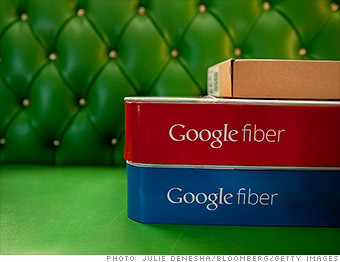

Consumer technology has lacked a wow moment recently. But flexible screens and four other promising advances could eventually lead to cool new devices.

Google's (GOOG) new fiber-optic network in Kansas City can provide download speeds of up to 1 gigabit per second -- about 200 times faster than the average American Internet connection. Most wireless carriers are upgrading their networks to super-fast 4G-LTE technologies, and some are beginning to explore even faster LTE-Advanced networks.
Faster speeds promise to bring about a new era of Internet technologies we haven't even conceived of yet -- just as no one with a 56k modem could have ever imagined a day when you could watch YouTube on your phone.
The problem with these technologies is they're expensive to deploy. Fiber-optic installation often involves ripping up a customer's lawn. Verizon (VZ) is not planning to expand its FiOS fiber-optic network, and AT&T (T) recently pledged to bring fiber to its neighborhood networking nodes -- but not to homes. Similarly, wireless infrastructure upgrades cost carriers tens of billions of dollars each year. And as consumers eat up more bandwidth, cell phone companies will need to buy up more wireless spectrum to serve up all that data.